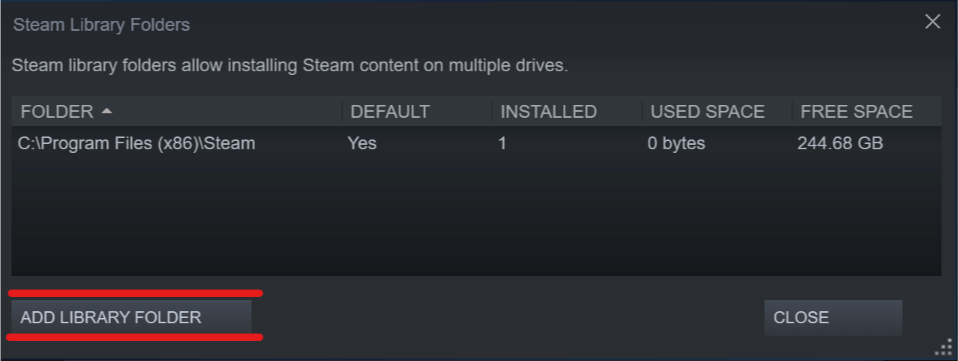

Select the Downloads section and click on the Steam Library Folder button. Launch the Steam client and click on Steam > Settings. Move the Steam games folder to the new directory. For instance, the folder structure looks like: D: > Games > Steamapps > Common.

Create a subdirectory folder named Steamappscommon in a new drive. To do so, follow the detailed steps below. In addition to extending the main drive, you can move the game data to a new drive and then add the Game Library folder. Now, restart your computer and check if the Steam not detecting installed game issue is solved. Click on the Apply button to execute the pending operation. Drag the blue sliding handle rightwards to enlarge the drive space and click on the OK button to save the change. Select the partition that stores the Steam installation folder and click on the Extend Partition feature from the left pane. Launch this program to get its main interface and You can follow the step-by-step guide below. MiniTool Partition Wizard can help you enlarge the partition with ease. Here you can utilize a professional storage management tool to extend your hard drive. For this situation, you can extend the main drive space that stores the Steam folder or move the game data to a new hard drive. Extend the Main Drive of Steam Installation LocationĪs mentioned above, the insufficient hard drive space can also lead to Steam not recognizing installed files. Restart your Steam client and see if the Steam not recognizing installed game issue is fixed. Click on the Select button, and then select a location that you want to save the Steam game data and click on OK. Click on Add Library Folder button in the pop-up window, and then select the location that you save all the Steam game data. Select the Downloads option from the left pane and click on Steam Library Folders. Open the Steam client and click on Steam > Settings. Many users reported that they fixed the Steam not detecting installed game issue by adding a library folder. Usually, the game data is stored in the Steam installation folder by default. Now, Steam will automatically download the game. Select the Games at the left pane and click on Install for the affected game. Open the Steam client and navigate to the Library tab. Then follow the on-screen prompts to complete the uninstallation. Right-click the problematic game and select Uninstall. Step 2. Change the View by type to Category, and then click on Uninstall a program under the Programs section. Step 1. Type control in the search box and select the Control Panel app from the context menu. If your steam doesn't recognize installed games, you can try uninstalling the games first and then install them from the Steam client.


 0 kommentar(er)
0 kommentar(er)
